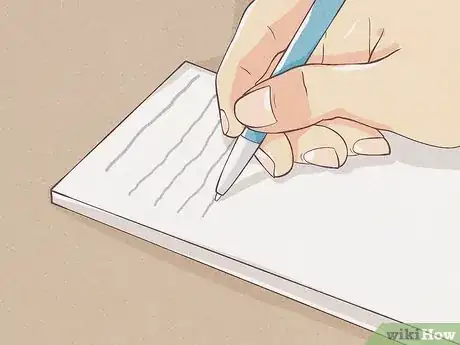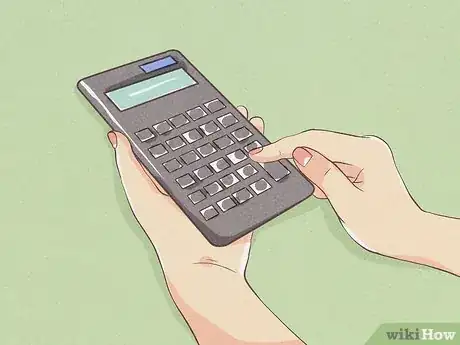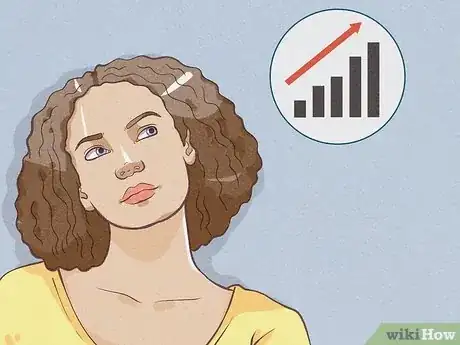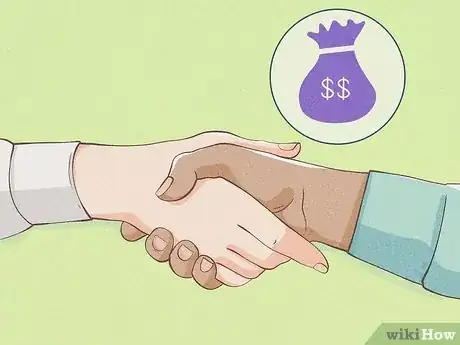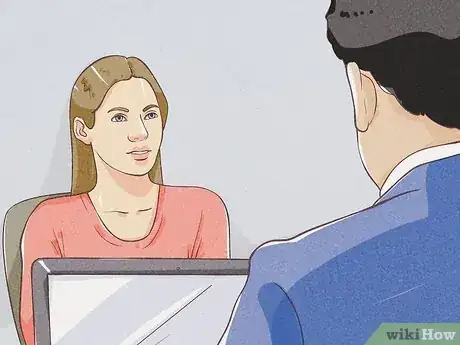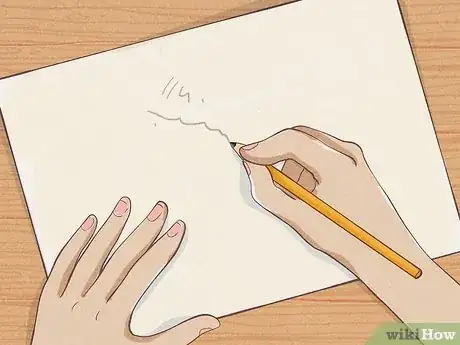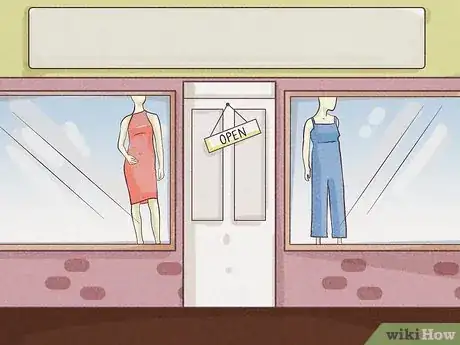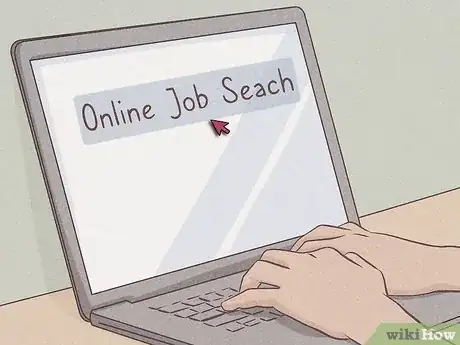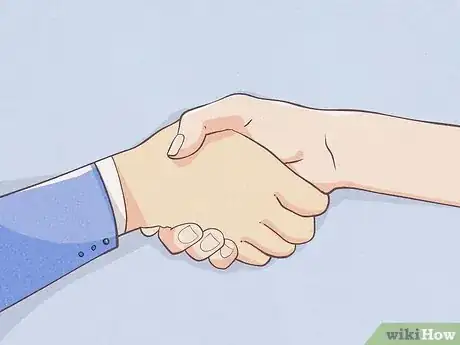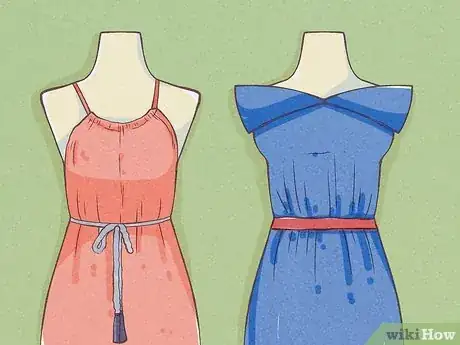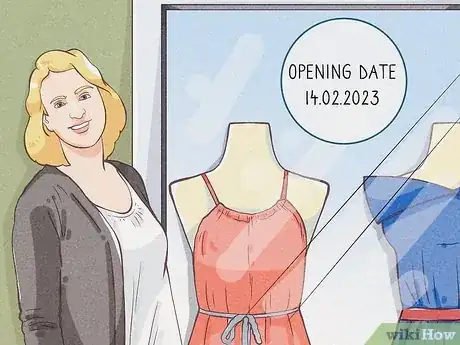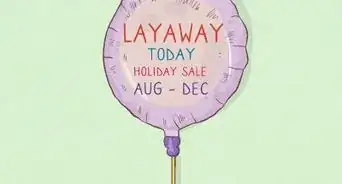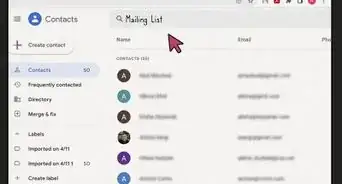X
wikiHow is a “wiki,” similar to Wikipedia, which means that many of our articles are co-written by multiple authors. To create this article, 15 people, some anonymous, worked to edit and improve it over time.
There are 11 references cited in this article, which can be found at the bottom of the page.
This article has been viewed 59,854 times.
Learn more...
Ever been trying or thinking of starting your own little fashion store or boutique, but every time you try an idea it doesn't come out right or just sounds plain silly? Now you'll know how without having to worry.
Steps
Part 1
Part 1 of 4:
Determining the boutique's style
-
1Think of the style. What sort of clothing and accessories do you wish to sell in the boutique? There are many possibilities from punk rock and edgy to Elizabethan ball gowns and wedding dresses. Do you want to specialize in fancy, casual, career clothing or party wear? It's important to have a theme to your style, as being too eclectic will discourage customers as they won't be sure what to expect, although you can be eclectic if you run a quality recycled clothing boutique.
- Note down the style and clothes you'd like in your boutique. Create lists of ideas and your thoughts.
- Be practical and logical. While you may love a particular style, is it one that will attract sufficient customers in your area? For example, you may love hippy gear but how many hippies are in your area waiting to buy it?[1]
-
2Consider the cost of the style you'd like to develop for the boutique. Some fashion will cost a great deal more than other fashion. The more detailed, hand-sewn and high couture the items, the more expensive your stock will be. On the other hand, if the items are manufactured in bulk for all sizes, they'll cost less.
- Look online to get an idea of the costs involved for different styles of clothing, at manufacturing and designer sites for retailers.
- What sorts of mark-ups can you reasonably expect to charge to make a profit and still get customers?[2]
Advertisement
Part 2
Part 2 of 4:
Dealing with the practicalities of setting up a business
-
1Remember at all times that this is a business. While fashion may be your passion, you won't last long if you don't treat it as a business and take the need to keep within a budget and make a profit seriously.[3]
-
2Develop your budget.[4] If you are serious about starting a boutique, then make sure you check if your local bank does special start up business loans.[5] You could always borrow from a relative, providing that it is not too big a loan and it is not going to affect the relationship that you have with them now.[6]
- The budget needs to cover rent for the store, insurance, power/water, stock, clothing racks/hangers/display units, etc. and such items as lighting, cash registers, card payment facilities, carry bags, advertising, etc. You'll also need money for staff and cleaners.
-
3Find out what licensing requirements exist for running the boutique. Talk to your local council/municipality and chamber of commerce for help on this.[7]
-
4Decide whether you'll sell in a store or online. One of the good things about doing your business online is that you can start off there, make a profit, then move to a store when your business is up and running. One of the good things about having a storefront business is that you usually make more profit, but will need to work full time, unless you have the money to spend on employees. A good online business boutique can be run part-time, in the evenings, whatever.[8]
- Consider working toward having both.
-
5Find a suitable place to set up the boutique. Think location. If you plan to use a shopfront, you'll need to be where the customers are going to find it easy to get to you and are going to make the effort. Check for parking and local transport, accessibility for all persons and a safe area. It's helpful if people already shop in the area for fashion.
- If you are going to be selling your clothing online, then check out sites such as eBay and Etsy.
-
6Source suppliers. You'll need to find a reliable and affordable source of the fashion going into your boutique. Spend a lot of time researching this aspect and making quality, long-term contacts. It's a really good idea to work with someone who already knows the fashion industry well and is willing to help you to make the right connections. Do plenty of research and talk with the manufacturers, tailors, designers, and others, as relevant.
- You'll need design specifications if you're asking manufacturers or designers to make clothing to specific requirements. Always ask for test garments first, to be sure they understand what you're seeking.
- Consider hiring local sewers if you'd like to help people in your area make a living. This can be an added selling point if you market it well.
Advertisement
Part 3
Part 3 of 4:
Designing the boutique
-
1Do some sketches of the store's possible layout. You can't just start automatically, not even knowing what you want to create by way of the shop floor design. Sketch out your ideas to help when you discuss it with others helping you to set up the store.
- If selling online, develop a recognizable online brand for your clothing sales.[9]
-
2Develop the shopfront store. If you're good at design, you might do most of this yourself; if not, hire someone who is good at this aspect of developing a store. Add furniture, paint, mannequins, posters and the clothing racks.
-
3Think of a name for the boutique. Bear in mind that this is very important, as a good name will make customers remember you, whereas a bad, run-of-the-mill name will make you harder to remember. If your boutique is going to be quirky, call it something quirky. If it is going to be hippy, call it something like "wild" or "free". You get the idea!
Advertisement
Part 4
Part 4 of 4:
Hiring employees
-
1Decide which employees you need. When starting out, keep this to a minimum, as you will need to account for their wages and relevant benefits. Online job search sites will assist you with this search.[10]
- Remember that job advertisements will cost you, so add these into the budget.
- Make the job requirements absolutely clear in the description.
-
2Hold interviews. If you need help with this aspect, ask someone you trust to come along, such as a friend or sibling who is already in business. Develop a list of quality interview questions to assist you in finding the right person for the role.[11]
-
3Meet your employees and visit the boutique together. Arrange a time and date that your employees and you will meet up at the building. Discuss setup.
-
4Set up the stock. Place all the clothing out on display, ensuring that it looks appealing and is easy for customers to see and access.
-
5Set an opening date for the boutique. Since people love all things new, this is a great opportunity to encourage people to come and see your new boutique. Throw a party on opening day and encourage people to come by advertising online (Facebook, Twitter, etc.) and through standard advertising. Consider having special deals for the opening week, to encourage purchases.[12]
- If opening an online-only store, use social media to encourage customers to visit; you can still have opening sales. You can even have a local party which is then reported online to all viewers.
Advertisement
Community Q&A
-
QuestionDoes the size of the store really matter?
 Community AnswerYes and no. Yes because the size can affect how much you can put in your store and the layout that you end up using. No because the size doesn't change the quality or appeal of the store.
Community AnswerYes and no. Yes because the size can affect how much you can put in your store and the layout that you end up using. No because the size doesn't change the quality or appeal of the store.
Advertisement
Warnings
- Be careful––some people can lie on their resume.⧼thumbs_response⧽
- Many small businesses do not succeed due to unrealistic expectations or a lack of business acumen. You must know the market, choose the right niche, do paperwork regularly and stay within budget. Having a head for business is as important as having a head for fashion. If not, get yourself good advisers, such as an accountant and a lawyer.⧼thumbs_response⧽
- Be realistic. Running a business is hard work and the fashion industry has a glut of sellers, so you must be unique and excel at selling to stay popular with customers and be successful in the fashion business.⧼thumbs_response⧽
Advertisement
Things You'll Need
- Unused notepad/book
- Sketchbook
- Computer
References
- ↑ https://www.entrepreneur.com/article/202334
- ↑ https://www.entrepreneur.com/article/193986
- ↑ https://www.entrepreneur.com/article/284772
- ↑ https://www.business.gov.au/Finance/Accounting/How-to-create-a-budget
- ↑ https://articles.bplans.com/10-things-the-bank-will-ask-when-you-need-a-business-loan/
- ↑ https://www.debt.org/credit/loans/friends-family/
- ↑ https://howtostartanllc.com/business-ideas/clothing-boutique
- ↑ https://howtostartanllc.com/business-ideas/clothing-boutique
- ↑ https://www.forbes.com/sites/tomward/2018/05/31/how-to-build-your-personal-brand-online/
About This Article
Advertisement
